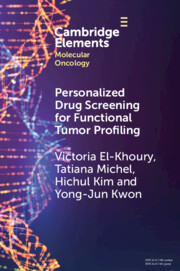Element contents
Personalized Drug Screening for Functional Tumor Profiling
Published online by Cambridge University Press: 10 June 2022
Summary
Keywords
- Type
- Element
- Information
- Series: Elements in Molecular OncologyOnline ISBN: 9781009037877Publisher: Cambridge University PressPrint publication: 07 July 2022
References
- 4
- Cited by

